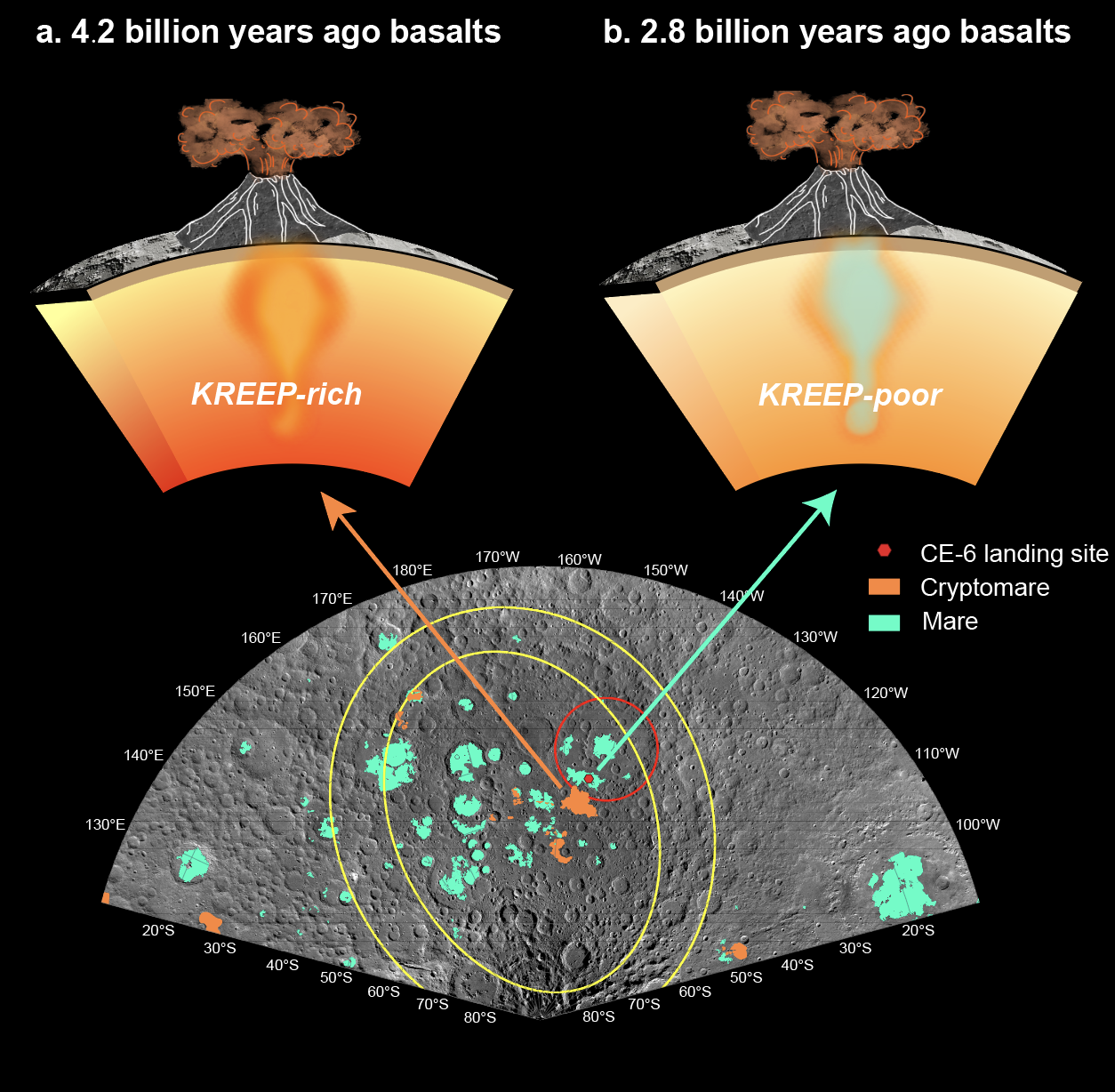Unravelling the volcanic history of the lunar farside is crucial for understanding the hemispheric dichotomy of the Moon. Prof. LI Qiu-Li's Lab at IGGCAS, has identified volcanic events on the lunar farside at 2.8 billion years ago (Ga) and 4.2 Ga, based on basalt samples returned by the Chang’e-6 mission. This work was recently published in Nature.
The asymmetry between the Moon's nearside and farside—encompassing differences in basalt distribution, topography, crustal thickness, and thorium (Th) concentration—remains an unresolved mystery. China's Chang'e-6 mission, the first to return samples from the lunar farside, retrieved 1,935.3 g of lunar soil, creating a unique opportunity to explore volcanic activity on this hemisphere.
Under the direction of Prof. LI Qiu-li, postdoctoral researcher ZHANG Qian conducted systematic radioisotope dating on 108 basalt fragments. Of these, 107 fragments revealed a consistent formation age of 2807 ± 3 million years ago (Ma), indicating the eruption age of local basalts at the Chang'e-6 landing site. One high-aluminum basalt fragment, dated to 4203 ± 4 Ma, is thought to have originated from a cryptomare region south of the landing site (see Figure 1).
This 4.2 Ga high-Al basalt is the oldest lunar basalt sample yet returned with precise age determination, while the 2.8 Ga volcanic episode has not been observed in nearside samples. These data indicate that volcanic activity on the lunar farside persisted for at least 1.4 billion years. Initial lead isotope analysis suggests that these basalts derive from distinct mantle sources: the 4.2 Ga basalt from a KREEP-rich (K, rare earth elements, and P) source, and the 2.8 Ga basalt from a KREEP-poor source.
The close alignment between the 2.8 Ga basalt age and crater-counting estimates suggests that the cratering chronology model, established based on nearside observations, is also applicable to the lunar farside. The radioisotope ages of the Chang'e-6 basalts provide an essential calibration point for refining the lunar crater-counting chronology, enhancing its accuracy.

Figure 1: Distribution of distinct volcanic episodes on the Moon's farside. The remote sensing image highlights the Chang'e-6 landing site along with nearby mare and cryptomare basaltic units. (Image credit: YANG Muhan).
This research was conducted in collaboration with theNational Astronomical Observatories, and the samples were provided by the China National Space Administration. Funding was provided by the National Natural Science Foundation of China, the Strategy Priority Research Program (Category B) of CAS, and the Key Research Program of IGGCAS.
Contact:
LI Qiu-Li
State Key Laboratory of Lithospheric and Environmental Coevolution, IGGCAS
Phone: 86-10-82998535
E-mail: liqiuli@mail.iggcas.ac.cn